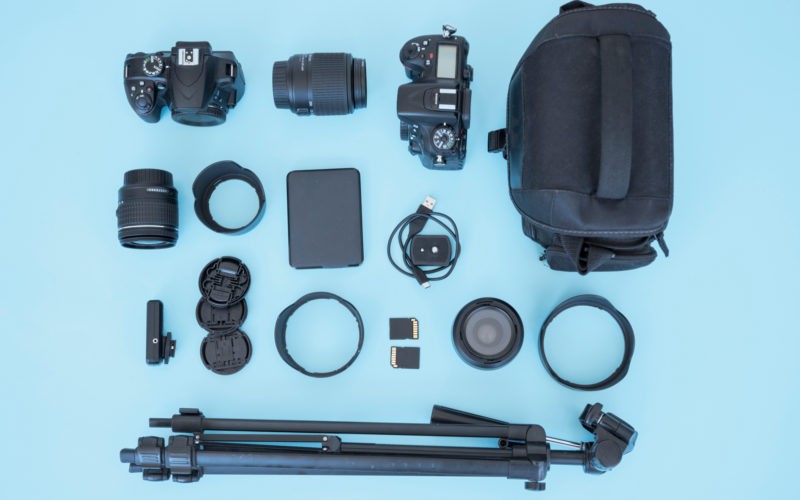Photography is a hobby and a profession that can truly change the way you view the world. At the same time, it can also be a challenging pursuit that requires you to maximise your resources and push your limits, all towards capturing an unforgettable moment or a once-in-a-lifetime event. As such, for those who take it seriously, photography — especially in its different sub-disciplines—also demands specific gear to help you improve your skills and encourage new heights of creativity.
With the art of photography always evolving, the possibilities that go with practising the craft also expand, along with the technology and equipment that make taking that once unattainable shot a snap, so to speak. So, whether you’re looking for the best gear to take on your next trip or planning to explore camera rental services to try out the latest equipment, consider these gadgets and accessories to step up your photography game:
1. A Travel Tripod
As a photographer, it’s almost certain that you’ll never leave home without a camera, even if it’s just the one in your phone. A compact tripod can ensure that you’ll never miss a shot wherever you may be.
Choose a lightweight, compact travel tripod that you can easily carry in your bag with you, perfect for those unexpected opportunities or casual occasions when you want to take candid shots. Moreover, you can also go for a flexible tripod that can attach or wrap around any object (like a tree trunk or a handrail) to let you shoot at odd angles. Many travel tripods also double as monopods or selfie sticks, which can be useful for taking vlog-style videos.
2. A Reliable Stabiliser or Gimbal
If you also dabble in film as well as photography, you must be familiar with the struggle of keeping your hands stable while taking important footage. Perhaps this also means that you’re no stranger to stabilisers and gimbals either. These devices take the pressure off your arms, helping you take steady shots with added support and security.
It’s important to point out that stabilisers and gimbals are not one and the same, as each has specific functions and fits particular use cases. A stabiliser is a mechanical device designed to balance the camera using counterweights, thus reducing shaking caused by hand movements. Stabilisers should be sufficient for rugged, outdoor shots, documentaries, indie films, or student projects, as they give raw and organic outcomes and are more affordable.
A gimbal, on the other hand, is motorised and uses gyroscopic sensors and electronic motors to stabilise a camera in three axes (pitch, roll, and yaw). As such, gimbals provide superior stabilisation given that they can adjust the camera’s position in real-time using motors. Gimbals are ideal for complex and professional-grade shots or for taking dynamic movements since they lend better precision and advanced stabilisation. Just remember that since they’re electronic devices, gimbals require batteries and will be more expensive to buy and maintain than stabilisers.
3. A Sturdy Camera Bag
Your photography equipment is an important (and expensive!) investment that should be protected, especially when you’re travelling. That said, a camera bag is a straightforward but dependable solution for carrying your gear with you, without the fear of damage or loss.
You can choose between messenger bags or backpacks, depending on the type of equipment you’ll be taking and how much; just make sure to invest in the type with protective padding, dividers, and an all-weather shield to keep your stuff safe on the go.
4. A Light Tent for Product Shots
Taking pictures of products or small items can be a challenge since they require even lighting, but this can be easily remedied with the help of a light tent. A light tent (also called a lightbox) is a portable, enclosed space used for shooting smaller subjects like products, collectibles, or toys. Since it’s enclosed, the resulting images have smooth lighting with minimal shadows and reflections.
Light tents are handy tools for product shots, macro photography, or food photos. They’ll ensure consistent output that highlights intricate details without the distracting glare.
5. Filters and Polarisers
As an art form and a discipline, photography is full of surprises, both good and bad. Among the main obstacles you’ll encounter in your photography practice are less-than-ideal conditions that can affect the quality of your shots and influence your overall experience. But don’t let these circumstances discourage you from taking that seemingly impossible shot; instead try a filter or a polariser to help you capture photos of your desired quality.
A filter refers to a variety of tools that you can attach to your camera to modify light in a number of ways. They can help with light reduction, colour enhancement, protection from UV rays, or creative modifications depending on the type of filter; some examples include UV filters, neutral density (ND) filters, graduated ND filters, colour filters, and infrared filters.
Meanwhile, polarisers are a specific type of filter that reduce reflections, manage glare, and enhance colours. They are particularly useful in landscape photography, architecture photography, or when shooting through glass or water.
Conclusion
Photography is all about exploration, whether that means trying your hand at shooting different subjects, experimenting in various weather conditions, or checking out a new destination. In that same vein, trying out a variety of tools and equipment — and investing in the ones that work for you — can help you grow as a photographer and strengthen your vision for your photography practice.












